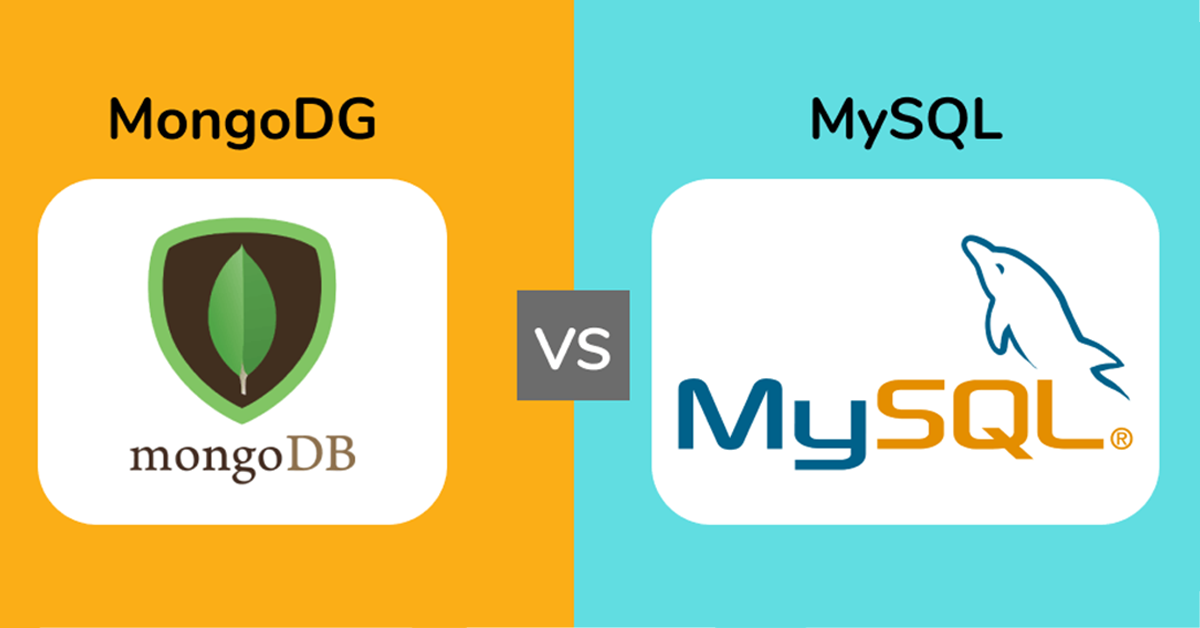What are the main differences between MySQL and MongoDB?
MySQL
MySQL is a popular Oracle-developed, free-to-use, and open-source relational database management system (RDBMS). MySQL stores data using tables and rows enforces referential integrity and uses structured query language (SQL) for data access, as with other relational structures when users need to access data from a MySQL database, they need to create a SQL query that brings together several tables to create a view of the data they need. Database schemas and data models need to be defined ahead of time, and data must match this schema to be stored in the database. This rigid information storage approach provides some degree of security but trades this for flexibility. If it is necessary to store a new type or format of data in the database, schema migration must occur, which can become difficult and costly as the database size increases.
MongoDB
MongoDB is an open-source, free-to-use database system that diverges significantly from conventional relational frameworks. As a non-relational (NoSQL) database, MongoDB stores data in JSON-like documents (actually stored as binary JSON or BSON) instead of the traditional table-and-row format used in relational systems.
MongoDB documents consist of key/value pairs, which can include arrays and nested documents. Unlike relational databases, the arrangement of these key/value pairs can vary between documents within the same collection. This self-descriptive structure allows for greater flexibility in data representation.
When to Use MongoDB vs MySQL
Choosing between MongoDB and MySQL is a strategic decision influenced by the specific requirements of the project.
MySQL is a robust relational database system offering a familiar environment for seasoned professionals. It is ideal for applications requiring strict data structure and strong relational integrity.
MongoDB is a versatile, non-relational database offering horizontal scalability. While it lacks some of the strict security features of relational databases (e.g., referential integrity), it excels in flexibility and supports unstructured or semi-structured data sets.
Which One Do You Pick?
MongoDB vs MySQL: User-Friendliness
For developers, MongoDB is often more accessible due to its straightforward data storage concepts. Without an enforced schema, MongoDB stores data in collections, making it suitable for applications that don’t rely on rigid data structures. This flexibility is particularly appealing for developers who are not database specialists but need a database to complement application development.
For example, web applications dealing with unstructured or semi-structured data benefit greatly from MongoDB’s ability to handle various data types within the same collection.
In contrast, MySQL is a better choice for users experienced in SQL and relational database design. It is well-suited for applications requiring complex and rigid data schemas, such as banking systems, where strict referential integrity and precise transactional guarantees are critical.
MongoDB vs MySQL Scalability
MongoDB is highly scalable, designed to handle large-scale applications seamlessly. It supports horizontal scaling through sharded cluster configurations, where data is distributed across multiple servers (shards). Each shard can also be configured as a replica set, ensuring high availability and disaster recovery. This approach allows MongoDB to scale both read and write operations efficiently across distributed environments.
Replica sets in MongoDB provide redundancy by replicating data across a group of servers, ensuring minimal downtime and robust disaster recovery mechanisms.
MySQL, on the other hand, primarily supports vertical scaling, which involves adding resources to a single database server. While this can improve performance to a certain extent, it has inherent limits due to hardware constraints.
MySQL also allows read replication, where additional servers maintain read-only replicas of the main database. However, this is typically capped at five replicas and is limited to read operations. Write-heavy applications or those requiring frequent synchronization may encounter lag issues with this setup. Although MySQL now supports multi-master replication, its scalability features are less flexible and robust compared to MongoDB.
MongoDB vs MySQL Performance
Performance comparisons between MongoDB and MySQL are nuanced because they are fundamentally different in structure and use cases.
-
Joins vs. Embedded Data:
- MySQL excels in handling joins across properly indexed tables, making it ideal for highly normalized databases.
- MongoDB minimizes the need for joins by using a hierarchical data model, embedding related data within a single document. This approach reduces query complexity and improves performance for many applications.
-
Write Operations:
- MongoDB is optimized for write efficiency. It includes an
insertMany()API, enabling rapid insertion of large datasets, prioritizing speed over traditional transactional guarantees. - MySQL performs row-by-row insertion, which can be slower for large data volumes.
- MongoDB is optimized for write efficiency. It includes an
-
Read and Update Operations:
- For retrieving a large number of records, MySQL typically outperforms MongoDB due to its indexing and join optimization.
- For bulk updates or modifications, MongoDB generally delivers faster performance because of its flexible schema design and document-oriented nature.
JSON Wire Protocol
The JSON Wire Protocol facilitates data transfer between a client and server using REST-based APIs. This protocol is fundamental for browser communication, with each browser relying on its specific driver to handle interactions. While not exclusive to either MongoDB or MySQL, JSON Wire Protocol reflects MongoDB’s alignment with modern application architectures, as its document structure closely mirrors JSON, enhancing compatibility and efficiency in web development scenarios.
Flexibility
MongoDB is the clear winner in terms of flexibility. Its schema-less nature allows developers to evolve and upgrade applications seamlessly without requiring costly or time-intensive schema migrations. This adaptability is particularly beneficial for large, growing databases. MongoDB supports dynamic schema updates, including adding new fields or modifying nested arrays, often through aggregation pipelines, making it ideal for iterative development.
In contrast, MySQL requires more structured schema migration processes, which can be slow and cumbersome, especially for large databases. Modifying schemas in MySQL often impacts dependent stored procedures, adding complexity to the migration process.
Both MongoDB and MySQL are easy to install on Linux and Windows and support popular programming languages like Java, Node.js, and Python. MongoDB also provides MongoDB Atlas, a free-to-use managed cloud solution for exploration, whereas MySQL relies on third-party cloud providers, often tied to free-tier conditions.
MongoDB vs MySQL Security
Both MongoDB and MySQL provide robust security features, including:
-
Encryption:
- MongoDB supports TLS-encrypted communications and data encryption at rest using a master key that remains inaccessible to the database itself.
- MySQL offers similar encryption capabilities, ensuring secure data transfer and storage.
-
Role-Based Access Control (RBAC):
- MongoDB employs RBAC, assigning users to roles with specific permissions for datasets and operations.
- MySQL also uses an RBAC model, with granular permissions for database operations and access.
Most Popular Courses
Software Testing || Web designing development || Big Data || Google Cloud certification







